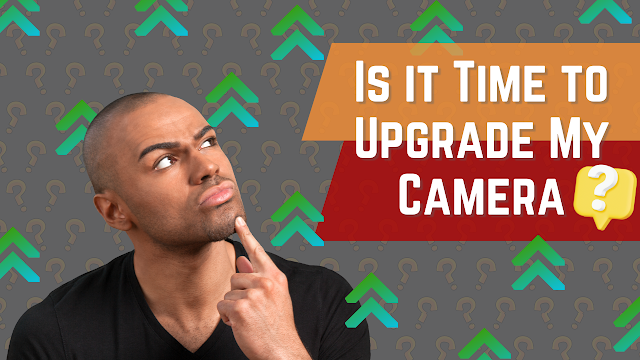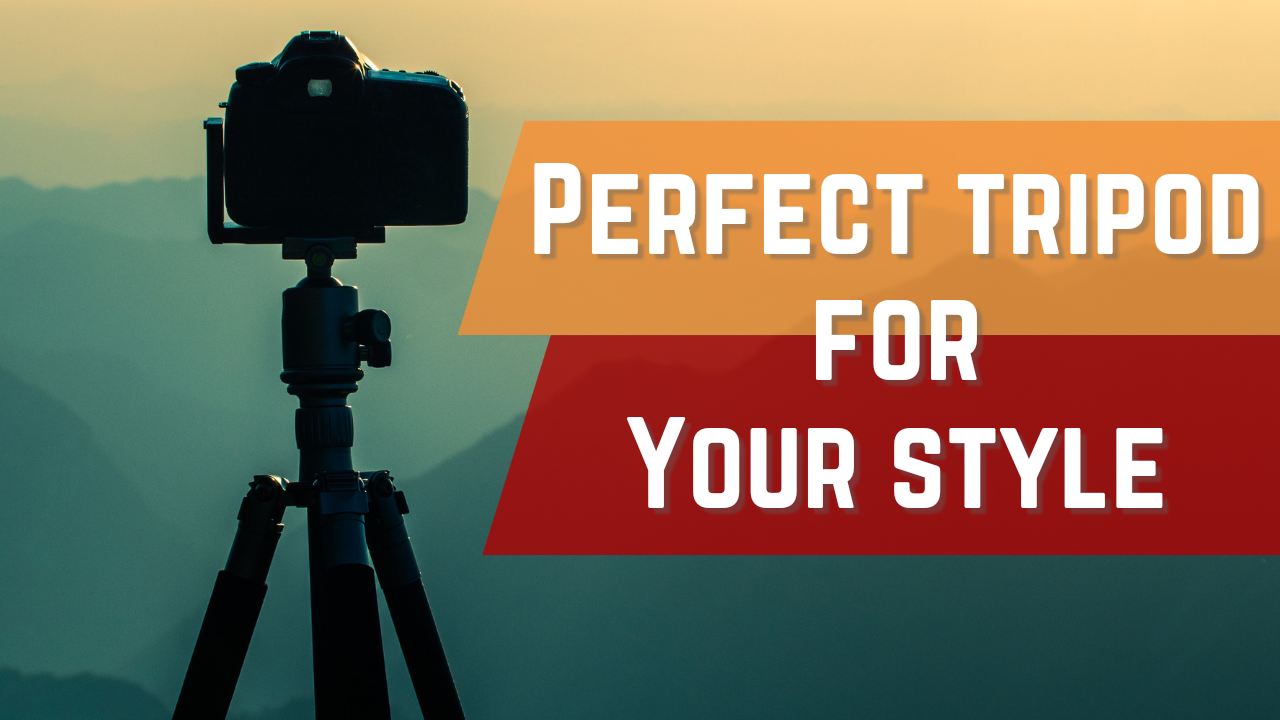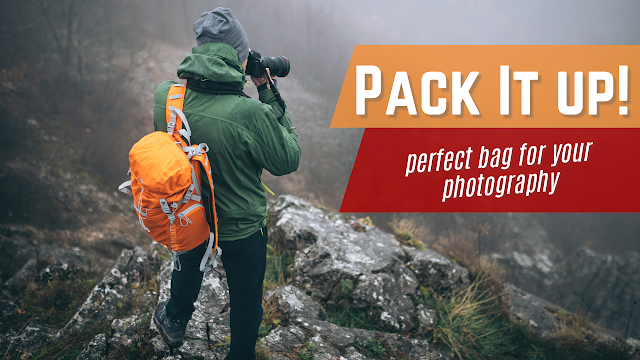the BIG Question: Is it Time to Upgrade My Camera?
Hey everyone, did you ever had that familiar itch? – the longing for a shiny new camera promising creative breakthroughs – strikes all photographers at some point. But before diving headfirst, let's ask the critical question: do you truly need an upgrade?
Signs You're Due for a Refresh
Upgrading isn't a decision to take lightly. Here are some telltale signs it might be time:
- Image Quality Woes: Grainy low-light photos? Blurry action shots? If your camera can't deliver, explore options with better sensors, megapixels, or low-light capabilities.
- Technical Limitations: Sluggish autofocus missing fleeting moments? Craving features like burst shooting or high-resolution video? Upgrading unlocks technical advancements to fuel your vision.
- Creative Block: Does your current camera hinder your artistic expression? Yearning for tilt-shift lenses for miniature effects or faster shutter speeds for creative blurs? An upgrade can open creative doors.
- Workflow Woes: Slow processing, clunky menus, or limited battery life hindering your flow? Upgrading can bring efficiency and a smoother workflow, letting you focus on capturing the moment.
Hold On, Not So Fast!
Upgrading isn't always the answer. Consider:
- Mastering the Craft: Investing in online courses or workshops might yield bigger results than a new camera.
- Software Updates: Check for firmware updates that enhance your camera's performance and features.
- Lens Magic: Upgrading your lens could be more cost-effective for specific needs, like wider apertures for low-light or telephoto reach for wildlife photography. (we'll talk more on this on another time)
Top Camera Picks for 2024
Remember, the "best" camera is the one that fits your needs and budget. Here are some top picks categorized for different photographers, each with detailed specs, pros, cons, price, and a unique selling point:
For the Aspiring Enthusiast
- Specs: APS-C sensor, 24MP, 11fps burst, 4K video.
- Pros: Excellent autofocus, compact size, good image quality.
- Cons: Limited battery life, plastic build.
- Price: ~$800
- Stands out for: Fast autofocus and excellent value for beginners.
- Specs: APS-C sensor, 24MP, 10fps burst, 4K video.
- Pros: User-friendly, vlogging features, good image quality.
- Cons: Smaller APS-C sensor, limited lens selection.
- Price: ~$600
- Stands out for: Vlogging capabilities and user-friendly interface.
- Specs: APS-C sensor, 26MP, 30fps burst, 4K video.
- Pros: Retro design, fast autofocus, film-like image quality.
- Cons: Smaller APS-C sensor, higher price point.
- Price: ~$900
- Stands out for: Unique film simulations and stylish design.
- Specs: Full-frame sensor, 24MP, 11fps burst, 4K video.
- Pros: Entry-level full-frame, compact size, good image quality.
- Cons: Limited lens selection, fewer features than competitors.
- Price: ~$1000
- Stands out for: Entry point into the full-frame world with a compact body.
- Specs: Micro Four Thirds sensor, 20MP, 15fps burst, 4K video.
- Pros: Lightweight, stabilized sensor, weatherproof.
- Cons: Smaller sensor, limited full-frame lens options.
- Price: ~$800
- Stands out for: Compactness, portability, and weatherproof build.
- Specs: Micro Four Thirds sensor, 20MP, 20fps burst, 6K video.
- Pros: High-speed burst shooting, 4K/6K video capabilities, rugged build.
- Cons: Smaller sensor, larger and heavier body.
- Price: ~$1200
- Stands out for: High-speed burst shooting and professional-grade video features.
For the Dedicated Hobbyist
- Specs: APS-C sensor, 26MP, 15fps burst, 4K video.
- Pros: Fast autofocus, film-like image quality, professional-grade features.
- Cons: Larger and heavier than some APS-C options, higher price point.
- Price: ~$1600
- Stands out for: Hybrid autofocus system and pro-level features for serious enthusiasts.
- Specs: Full-frame sensor, 24MP, 10fps burst, 4K video.
- Pros: Excellent low-light performance, good battery life, wide lens selection.
- Cons: Older model with slightly lower resolution sensor than competitors.
- Price: ~$1800
- Stands out for: Versatility, low-light prowess, and affordability within the full-frame category.
- Specs: Full-frame sensor, 20MP, 20fps burst, 8K video.
- Pros: High-resolution sensor, fast burst shooting, advanced video capabilities.
- Cons: Expensive, larger and heavier body than some competitors.
- Price: ~$2500
- Stands out for: High-resolution sensor, 8K video recording, and professional-grade features.
- Specs: APS-C sensor, 20MP, 11fps burst, 4K video.
- Pros: Retro design, user-friendly controls, good image quality.
- Cons: Smaller APS-C sensor, limited feature set compared to competitors.
- Price: ~$1000
- Stands out for: Classic rangefinder design and appealing to vintage photography enthusiasts.
- Specs: Micro Four Thirds sensor, 20MP, 18fps burst, 4K video.
- Pros: High-resolution sensor, advanced stabilization, rugged weatherproof build.
- Cons: Smaller sensor, limited full-frame lens options, higher price point.
- Price: ~$2000
- Stands out for: Excellent stabilization, weatherproof body, and high-resolution sensor in a compact form.
- Specs: Micro Four Thirds sensor, 25MP, 30fps burst, 5.7K video.
- Pros: Pro-grade video capabilities, high-speed burst shooting, flexible recording options.
- Cons: Smaller sensor, larger and heavier body than some competitors.
- Price: ~$2200
- Stands out for: Video-centric features, making it ideal for videographers and hybrid creators.
For the Serious Pro
- Specs: Full-frame sensor, 50MP, 30fps burst, 8K video.
- Pros: Unmatched speed and resolution, phenomenal autofocus, advanced video features.
- Cons: Extremely expensive, large and heavy body.
- Price: ~$6500
- Stands out for: Cutting-edge technology, ultimate performance for professional photographers and videographers.
- Specs: Full-frame sensor, 24MP, 30fps burst, 6K video.
- Pros: Fast burst shooting, advanced autofocus, rugged weatherproof build.
- Cons: Lower resolution sensor than some competitors, limited video capabilities.
- Price: ~$6000
- Stands out for: Speed, sports and action photography focus, and professional-grade durability.
- Specs: Full-frame sensor, 45MP, 20fps burst, 8K video.
- Pros: High-resolution sensor, excellent low-light performance, advanced subject tracking.
- Cons: Expensive, heavy body, limited lens selection compared to competitors.
- Price: ~$5500
- Stands out for: High-resolution sensor, low-light capabilities, and advanced subject tracking system.
- Specs: Medium format sensor, 51MP, 5fps burst, 4K video.
- Pros: Unmatched image quality, incredible detail and dynamic range, weatherproof build.
- Cons: Slow burst shooting, limited autofocus capabilities, very expensive.
- Price: ~$600
- Stands out for: Exceptional image quality for landscapes, studio work, and fine art photography.
- Specs: Medium format sensor, 100MP, 3fps burst, 5.3K video.
- Pros: Highest resolution medium format sensor on the market, incredible detail and dynamic range, modular system for customization.
- Cons: Very slow burst shooting, limited autofocus capabilities, extremely expensive.
- Price: ~$11,000
- Stands out for: Pushing the boundaries of resolution and image quality for professional photographers and artists.
Phase One IQ4 150MP
- Specs: Medium format sensor, 150MP, 1.5fps burst, 8K video.
- Pros: Unmatched resolution and dynamic range, superior image quality for professional applications.
- Cons: Enormous file sizes, slow workflow, requires specialized equipment and software, astronomically expensive.
- Price: ~$60,000 (body only)
- Stands out for: Ultimate image quality and resolution for high-end professional projects and large format printing.
Remember: This is just a starting point. Do your research, consider your specific needs and budget, and read detailed reviews before making a decision. Happy shooting!
*Disclaimer: This blog post contains affiliate links. If you make a purchase through one of these links, I may earn a small commission at no extra cost to you. Thank you for supporting me and this blog!
*Links will bring you to Amazon search to give you freedom to search for the best deals








Comments
Post a Comment